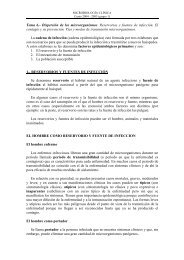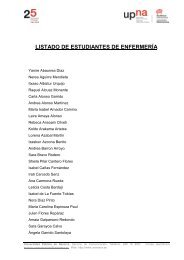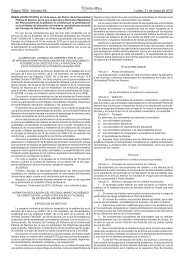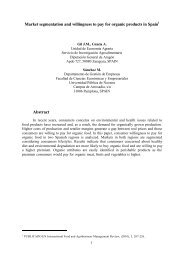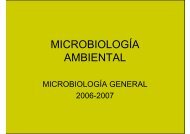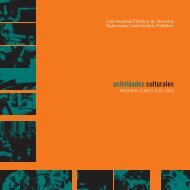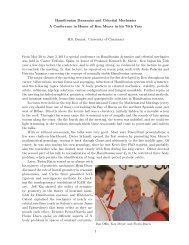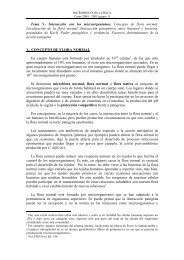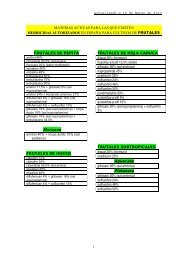Identification of Prosopis juliflora and Prosopis - Universidad Pública ...
Identification of Prosopis juliflora and Prosopis - Universidad Pública ...
Identification of Prosopis juliflora and Prosopis - Universidad Pública ...
You also want an ePaper? Increase the reach of your titles
YUMPU automatically turns print PDFs into web optimized ePapers that Google loves.
7presence or absence <strong>of</strong> each marker was scored in each accession <strong>and</strong> Nei’ssimilarity index (Nei <strong>and</strong> Li 1979) was applied to establish similarities. Thesimilarity values were used to cluster species using the unweighted pair groupmethod average (UPGMA) algorithm (Sneath <strong>and</strong> Sokal 1973).ResultsMolecular markers: section-specific, species-specific <strong>and</strong> complex-specificThe molecular markers obtained by PCR amplification that identified speciesbelonging to the section Algarobia, those that differentiated between P. <strong>juliflora</strong><strong>and</strong> P. pallida <strong>and</strong> those that characterised the P. <strong>juliflora</strong>–pallida complexin this study are presented in Table 2. Twenty primers yielded pr<strong>of</strong>iles usefulfor classification <strong>of</strong> the accessions. Six primers: L02 (775) , L06 (800) , L09 (335) ,S03 (550) , S07 (1160) <strong>and</strong> R17 (1220) (Figure 1) produced molecular markers thatwere present in all the accessions analysed except P. cineraria. Thus, five newprimers were added to S07 (1160) , previously described by Ramı´rez et al. (1999)as a section-specific marker for section Algarobia. Assuming that theseamplification products are all derived from <strong>Prosopis</strong> species forming part <strong>of</strong> thesection Algarobia, it could be suggested that there are section-specific molecularmarkers.The markers L04 (325) ; P01 (550) ; P08 (730) ; P09 (570) ; P13 (1250) ; P14 (510) ;S07 (980) <strong>and</strong> S11 (460) were present in P. pallida seeds collected in Trujillo. Asthe amplification products in plant material collected in Piura, where P. <strong>juliflora</strong><strong>and</strong> P. pallida are sympatric, are essentially identical to those present inmaterial from Trujillo, it may be concluded that the sample from Piura isP. pallida or a very closely related hybrid (Figure 2a). Seed from introducedpopulations presently identified as P. <strong>juliflora</strong> from Brazil, Cape Verde <strong>and</strong>Senegal, <strong>and</strong> seed collected in Brazil <strong>and</strong> classified as P. affinis Sprengel allshowed similar molecular pr<strong>of</strong>iles to‘ that amplified in DNA extracted fromseed collected in Trujillo <strong>and</strong> Piura. Thus, all <strong>of</strong> these accessions correspond toTable 2. Molecular markers found in the <strong>Prosopis</strong> samples.SectionP. <strong>juliflora</strong>–pallidaP. pallidaP. <strong>juliflora</strong>Algarobiacomplex markersmarkersmarkersmarkersL02 (775) L01 (520) L04 (325) L04 (410)L06 (800) P01 (550) P08 (440)L09 (335) P08 (730) P12 (760)S03 (550) P09 (570) P12 (610)S07 (1160) P13 (1250) P14 (745)R17 (1220) P14 (510)S07 (980)S11 (460)






